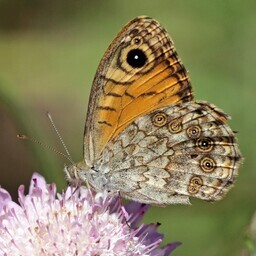A subjective feeling suggests that butterflies are scarce. Other butterfly enthusiasts have told me the same story. Since the second half of spring, something seems off. We're not talking about one or a few species being fewer, but all butterflies are fewer.
Scientists blame this year's cold and rainy spring. The last winter was rather warm, with the snowy part being short. Therefore, the first spring species appeared a couple of weeks earlier. However, the cold May and June meant that butterfly development is below the average of recent years.
The decline in butterfly numbers also affects nature. Butterflies are pollinators. In addition, their caterpillars are an important food source for many other animals. If this food source disappears, these animals may also suffer.
Although butterflies are doing poorly, the cold spring seems to suit other insect groups. For example, there still appear to be many bugs, dipterans, and hymenopterans.
There is hope for the future. Butterflies have a high reproductive potential. An average female butterfly lays hundreds of eggs. When favorable conditions return, the population can recover quickly.

